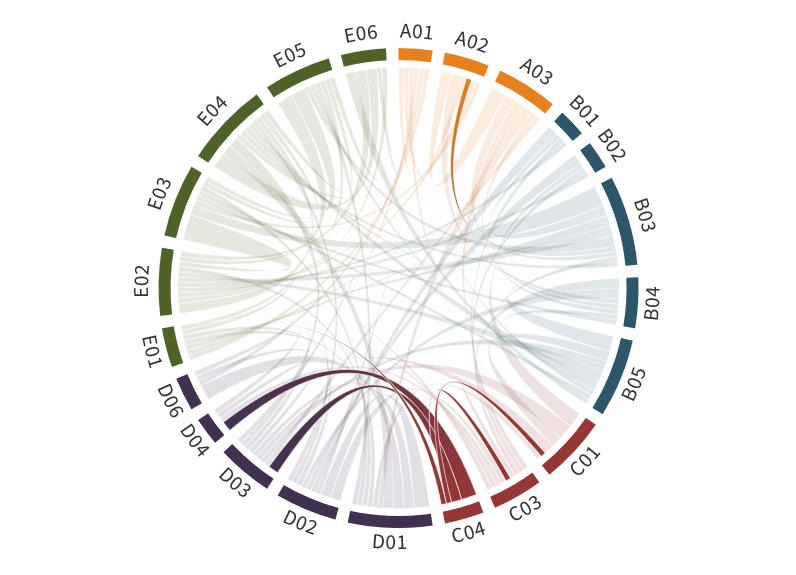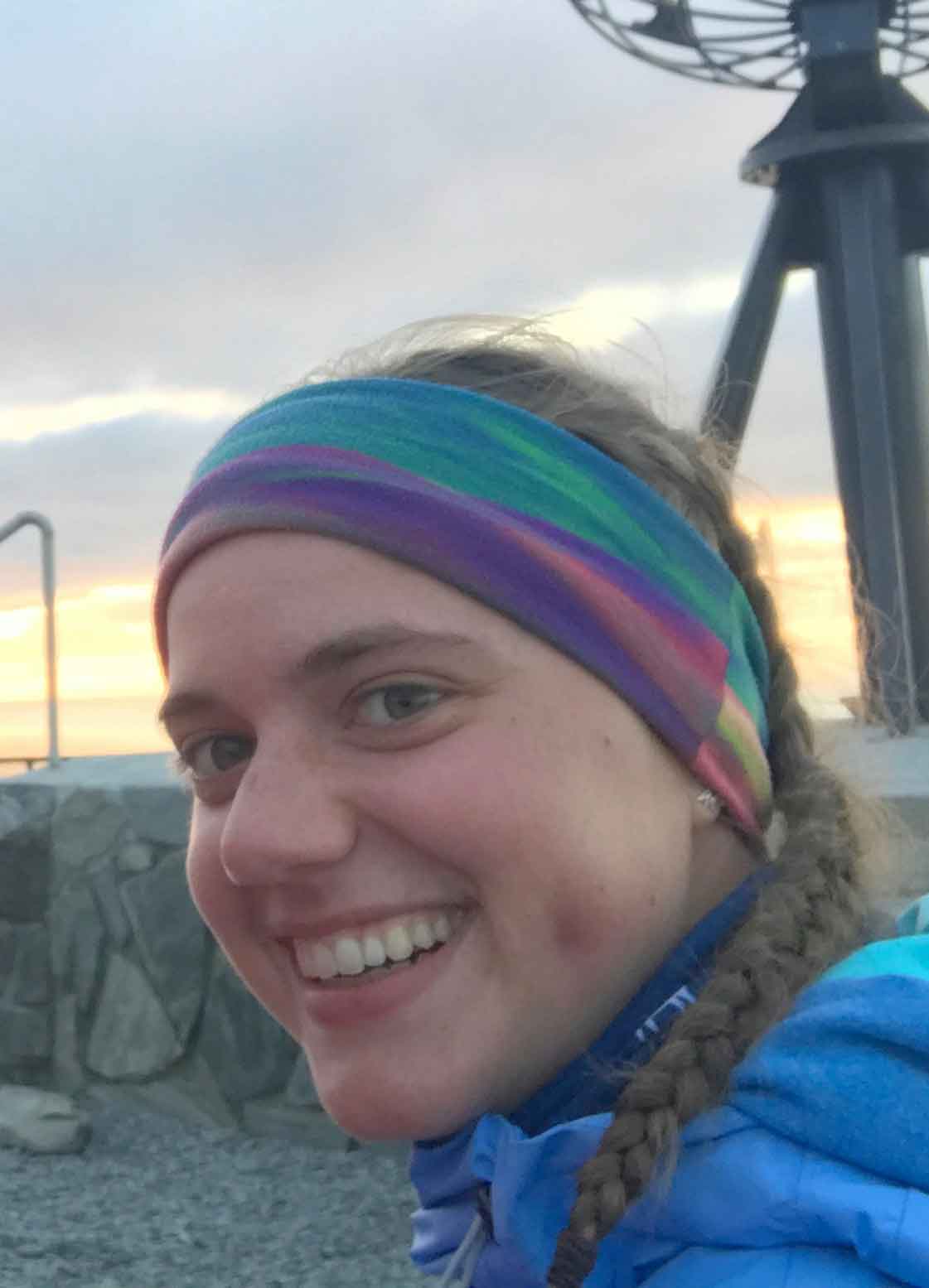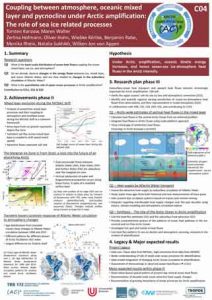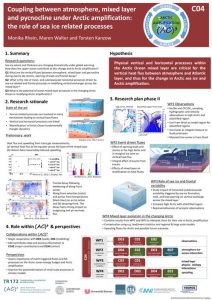C04: Coupling between atmosphere, mixed layer and pycnocline under Arctic amplification: The role of sea ice related processes
PIs: Torsten Kanzow, Maren Walter (former PI: Monika Rhein)
In our project C04 we aim to quantify the upper oceans’ role in Arctic amplification by investigating the near-surface ocean processes and their links to melt, formation, and presence of sea ice. In phase II our approach was to contrast mixed-layer processes in an already ”atlantified” regime in Fram Strait (featuring wintertime convection and strong heat loss) with those changes occurring and anticipated in the highly stratified and ice-covered central Arctic. Accordingly, we conducted process studies, namely a summer investigation in Fram Strait, a winter study in the central Arctic Ocean during MOSAiC, and an analysis of the changing sub-surface circulation of warm Atlantic water using tracer-based estimates of water mass ages. During the third phase our approach will be to synthesize the process understanding in an Arctic-wide, upper-ocean assessment, both for summer and winter.
Hypothesis:
Under Arctic amplification, oceanic kinetic energy increases, and hence ocean-sea ice-atmosphere heat fluxes in the Arctic intensify.
Specifically, we will address the questions:
- What is the basin-scale distribution of ocean heat fluxes coupling the ocean mixed layer, sea ice, and atmosphere?
- Do we already observe changes in the energy fluxes between ice, mixed layer, and warm Atlantic Water, and are they related to changes in the subsurface circulation of Atlantic Water?
- What is the quantitative role of upper-ocean processes in Arctic amplification?
Our anticipated results will contribute to the (AC)³ strategic questions SQ1 by clarifying the upper oceans’ role for sea ice loss and atmospheric convection, and SQ3 by identifying and quantifying regional varying sensitivities of the ocean-ice-atmosphere heat fluxes from observations, and their representation in model simulations.
Achievements in phase II
- We obtained samples for the transient tracers SF6 and CFC-12, the noble gas isotopes 3He, 4He 20Ne and 22Ne, as well as tritium (3H) during the MOSAiC expedition and the Maria S. Merian expedition MSM93 to Fram Strait. These data sets were measured in the home lab, quality controlled and recently finalized. In parallel, historical data sets of transient tracers were compiled to set up a framework that revealed the changing flow paths of Atlantic Water on multiannual to decadal time scales in response to changing environmental conditions as ice cover and atmospheric forcing.
- A complex high-resolution hydrographic data set of the evolution of a frontal system in the marginal ice zone in an atlantified regime was obtained during MSM93. Subsequently analysis for the vertical and horizontal exchange processes revealed a complex structure with moving surface and subsurface fronts between Surface Water, Polar Water and Atlantic Water. Both the surface and subsurface fronts are affected by the mesoscale meandering and large scale motion of the ice edge as well as a complete absence of a mixed layer.
- Based on the hydrographic and mixing data sets collected during MOSAiC in the central Arctic, the development of the mixed layer during the winter period of the drift was described, attributing the observed heat and salt fluxes to horizontal and vertical sources and processes. The surprising result is, that horizontal advection of salt in the mixed layer represents a major sink of salt, thus counteracting the rejection of brine from sea ice formation. Upward salt fluxes from across the halocline into the mixed layer are significantly enhanced during storm events.
Role within (AC)³
Members
Zerlina Hofmann
PhD
Alfred-Wegener-Institute Helmholtz Center for Polar and Marine Research (AWI)
Am Handelshafen 12
27570 Bremerhaven
Wiebke Körtke
PhD
University of Bremen
Institute of Environmental Physics
Otto-Hahn-Allee 1
28334 Bremen
Dr. Maren Walter
Principal Investigator
University of Bremen
Institute of Environmental Physics
Otto-Hahn-Allee 1
28334 Bremen
Prof Dr. Torsten Kanzow
Principal Investigator
Alfred-Wegener-Institute Helmholtz Center for Polar and Marine Research (AWI)
Am Handelshafen 12
27570 Bremerhaven
Former Members
Prof. Dr. Monika Rhein
Principal Investigator
University of Bremen
Institute of Environmental Physics
Otto-Hahn-Allee 1
28334 Bremen
Publications
2024
2023
Heuzé, C., Huhn, O., Walter, M., Sukhikh, N., Karam, S., Körtke, W., Vredenborg, M., Bulsiewicz, K., Sültenfuß, J., Fang, Y.-C., Mertens, C., Rabe, B., Tippenhauer, S., Allerholt, J., He, H., Kuhlmey, D., Kuznetsov, I., and Mallet, M., 2023: A year of transient tracers (chlorofluorocarbon 12 and sulfur hexafluoride), noble gases (helium and neon), and tritium in the Arctic Ocean from the MOSAiC expedition (2019–2020), Earth Syst. Sci. Data, 15, 5517–5534, https://doi.org/10.5194/essd-15-5517-2023.
McPherson, R. A.; Wekerle, C. & Kanzow, T., 2023: Shifts of the Recirculation Pathways in central Fram Strait drive Atlantic Intermediate Water Variability on Northeast Greenland shelf, J. Geophys. Res.: Oceans,128, e2023JC019915 https://doi.org/10.1029/2023JC019915
Ruiz-Castillo, E.; Janout, M.; Hölemann, J.; Kanzow, T.; Schulz, K. & Ivanov, V., 2023: Structure and seasonal variability of the Arctic Boundary Current north of Severnaya Zemlya, J. Geophys. Res.: Oceans, 118, e2022JC018677, https://doi.org/10.1029/2022JC018677
Heukamp, F. O.; Kanzow, T.; Wang, Q.; Wekerle, C. & Gerdes, R., 2023: Impact of Cyclonic Wind Anomalies Caused by Massive Winter Sea Ice Retreat in the Barents Sea on Atlantic Water Transport towards the Arctic: A Model Study. J. Geophys. Res.: Oceans, 128, e2022JC019045, https://doi.org/10.1029/2022JC019045
Doglioni, F.; Ricker, R.; Rabe, B.; Barth, A.; Troupin, C. & Kanzow, T., 2023: Sea surface height anomaly and geostrophic current velocity from altimetry measurements over the Arctic Ocean (2011–2020), Earth Syst. Sci. Data, 15, 225-263, https://doi.org/10.5194/essd-15-225-2023
Wendisch, M.; Brückner, M.; Crewell, S.; Ehrlich, A.; Notholt, J.; Lüpkes, C.; Macke, A.; Burrows, J. P.; Rinke, A.; Quaas, J.; Maturilli, M.; Schemann, V.; Shupe, M. D.; Akansu, E. F.; Barrientos-Velasco, C.; Bärfuss, K.; Blechschmidt, A.-M.; Block, K.; Bougoudis, I.; Bozem, H.; Böckmann, C.; Bracher, A.; Bresson, H.; Bretschneider, L.; Buschmann, M.; Chechin, D. G.; Chylik, J.; Dahlke, S.; Deneke, H.; Dethloff, K.; Donth, T.; Dorn, W.; Dupuy, R.; Ebell, K.; Egerer, U.; Engelmann, R.; Eppers, O.; Gerdes, R.; Gierens, R.; Gorodetskaya, I. V.; Gottschalk, M.; Griesche, H.; Gryanik, V. M.; Handorf, D.; Harm-Altstädter, B.; Hartmann, J.; Hartmann, M.; Heinold, B.; Herber, A.; Herrmann, H.; Heygster, G.; Höschel, I.; Hofmann, Z.; Hölemann, J.; Hünerbein, A.; Jafariserajehlou, S.; Jäkel, E.; Jacobi, C.; Janout, M.; Jansen, F.; Jourdan, O.; Jurányi, Z.; Kalesse-Los, H.; Kanzow, T.; Käthner, R.; Kliesch, L. L.; Klingebiel, M.; Knudsen, E. M.; Kovács, T.; Körtke, W.; Krampe, D.; Kretzschmar, J.; Kreyling, D.; Kulla, B.; Kunkel, D.; Lampert, A.; Lauer, M.; Lelli, L.; von Lerber, A.; Linke, O.; Löhnert, U.; Lonardi, M.; Losa, S. N.; Losch, M.; Maahn, M.; Mech, M.; Mei, L.; Mertes, S.; Metzner, E.; Mewes, D.; Michaelis, J.; Mioche, G.; Moser, M.; Nakoudi, K.; Neggers, R.; Neuber, R.; Nomokonova, T.; Oelker, J.; Papakonstantinou-Presvelou, I.; Pätzold, F.; Pefanis, V.; Pohl, C.; van Pinxteren, M.; Radovan, A.; Rhein, M.; Rex, M.; Richter, A.; Risse, N.; Ritter, C.; Rostosky, P.; Rozanov, V. V.; Donoso, E. R.; Saavedra-Garfias, P.; Salzmann, M.; Schacht, J.; Schäfer, M.; Schneider, J.; Schnierstein, N.; Seifert, P.; Seo, S.; Siebert, H.; Soppa, M. A.; Spreen, G.; Stachlewska, I. S.; Stapf, J.; Stratmann, F.; Tegen, I.; Viceto, C.; Voigt, C.; Vountas, M.; Walbröl, A.; Walter, M.; Wehner, B.; Wex, H.; Willmes, S.; Zanatta, M. & Zeppenfeld, S., 2023: Atmospheric and Surface Processes, and Feedback Mechanisms Determining Arctic Amplification: A Review of First Results and Prospects of the (AC)³ Project, Bull. Am. Meteorol. Soc., American Meteorological Society, 104, E208–E242, https://doi.org/10.1175/bams-d-21-0218.1
2022
Rabe, B., Heuzé, C.,Regnery, J., Aksenov, Y., Allerholt, J., Athanase, M., Bai, Y., Bauch, D., Basque, C., Baumann, T. M. Chen, D., Cole, S. T., Craw, L., Davies, A., Damm, E., Dethloff, K., Divine, D. V. Doglioni, F., Ebert, F., Fang, Y.-C., Fer, I., Fong, A. A., Gradinger, R., Granskog, M. A., Graupner, R., Haas, C., He, H., He, Y., Hoppmann, M., Janout, M., Kadko, D., Kanzow, T., Karam, S., Kawaguchi, Y., Koenig, Z., Kong, B., Krishfield, R. A., Krumpen, T., Kuhlmey, D., Kuznetsov, I., Lan, M., Lei, R., Li, T., Torres-Valdés, S., Lin, L., Lin, L., Liu, H., Liu, N., Loose, B., Ma, X., MacKay, R., Mallet, M., Mallett, R. D. C., Maslowski, W., Mertens, C., Mohrholz, V., Muilwijk, M., Nicolaus, M., O’Brien, J. K., Perovich, D., Ren, J., Rex, M., Ribeiro, N., Rinke, A., Schaffer, J., Schuffenhauer, I., Schulz, K., Shupe, M. D., Shaw, W., Sokolov, V., Sommerfeld, A., Spreen, G., Stanton, T., Stephens, M., Su, J., Sukhikh, N., Sundfjord, A., Thomisch, K., Tippenhauer, S., Toole, J. M., Vredenborg, M., Walter, M., Wang, H., Wang, L., Wang, Y., Wendisch, M., Zhao, J., Zhou, M., Zhu, J., 2022: Overview of the MOSAiC expedition – Physical oceanography. Elementa: Science of the Anthropocene, 10 (1): 00062, https://doi.org/10.1525/elementa.2021.00062.
2021
Hofmann, Z., von Appen, W.-J., & Wekerle, C., 2021. Seasonal and mesoscale variability of the two Atlantic Water recirculation pathways in Fram Strait. J. Geophys. Res. Oceans, 126, e2020JC017057. https://doi.org/10.1029/2020JC017057
Hofmann, Z., von Appen, W.-J., & Wekerle, C., 2021. Seasonal and Mesoscale Variability of the Two Atlantic Water Recirculation Pathways in Fram Strait. J. Geophys. Res. Oceans, 126, e2020JC017057. https://doi.org/10.1029/2020JC017057
2020





